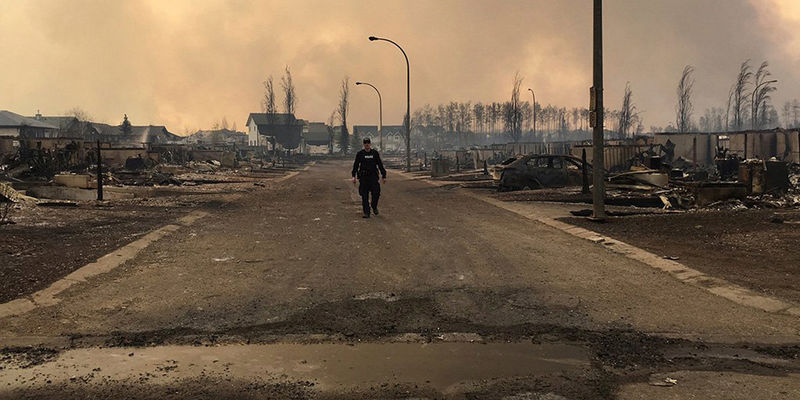By Nia Williams
CALGARY, Alberta (Reuters) - Northern Alberta's oil sands producers and communities are stepping up preparations for wildfire season to avoid a repeat of last year's devastating blaze that shut in more than a quarter of Canadian crude output and left thousands homeless.
The May 2016 fire ripped through the oil sands hub of Fort McMurray, destroying 10 percent of homes in the remote city of 88,000 people and shutting in more than a million barrels of crude production.
The region saw another mild winter, similar to the previous one, but has had a wetter fall and spring which should reduce the wildfire risk. Still, Fort McMurray has added eight new firefighters and begun fire-prevention measures like preemptively burning off vegetation that could fuel fires.
"Burning light fuels like dry grass started a month earlier than normal (this year)," said fire captain Damian Asher, who lost his home in the 2016 blaze.
Companies operating around Fort McMurray including Suncor Energy (TO:SU), Canadian Natural Resources Ltd (TO:CNQ) and Royal Dutch Shell (L:RDSa) cut production for weeks because of the fire threat last year, dealing a heavy blow to revenues.
With crude prices hovering around $50 a barrel (CLc1), the high-cost oil sands sector, which has seen an exodus of international investment in recent months, can ill afford more lengthy shut-ins.
Nearly all the projects are surrounded by dense boreal forest that provided ample fuel for last year's blaze.
Canadian Natural and Husky Energy (TO:HSE) said they have enhanced firebreaks at their respective 34,000 barrel per day Horizon and 172,000 bpd Sunrise sites by cutting back surrounding vegetation.
Cenovus Energy (TO:CVE), in the process of acquiring total ownership of its 200,000 bpd Christina Lake and 160,000 bpd Foster Creek projects from ConocoPhillips (N:COP), said it has always kept a clear perimeter of 10 to 30 meters around its operations.
This year, its emergency response plan includes getting firefighters on scene faster by increasing the number of people on-call in its corporate center Calgary and in the oil sands.
Cenovus has also given staff extra training on evacuations and put new operating procedures in place to improve communication during wildfires, spokesman Reg Curren said.
At Syncrude Canada, the 350,000 bpd mining and upgrading project majority-owned by Suncor, spokesman Will Gibson said the focus was on monitoring mental health and stress levels in employees who had to flee Fort McMurray last year.
Much of the vegetation to the south of the Syncrude site burned last year, but air pollution from large wildfires is a major problem for operators and can also trigger project shutdowns and evacuations.

"We can get smoked out pretty easily," said Gibson. "The flames didn't reach us last year but the smoke was pretty intense."